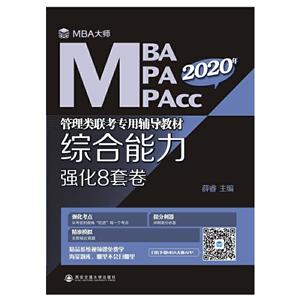跨文化交际教程

|
跨文化交际教程作者:余卫华,谌莉主编 开 本:24cm 书号ISBN:9787308181778 定价: 出版时间:2019-01-01 出版社:浙江大学出版社 |
跨文化交际教程 内容简介
本书为高等学校跨文化交际课程的通识教材, 以案例分析为线索, 注重跨文化交际案例的实际应用, 通过大量实例来阐释跨文化交际学的基本理念和观点, 揭示影响跨文化交际的深层因素, 提高学生的跨文化意识和能力。本书具有以下特点: 1.偏重应用, 难度适中。2.有浙江省精品在线开放课程为依托, 每章节都配有多个形式多样的视频。3.案例法, 有很强的现实性和可读性。4.与国外的科研热点相结合, 如global citizenship等话题是*新的研究热点。
跨文化交际教程 目录
Chapter 1 Brief Introduction to Intercultural Communication1.1 Culture as Intercultural Communication
1.1.1 Two Types of Culture
1.1.2 Five Dimensions of Culture
1.1.3 Characteristics of Culture
1.1.4 Definition of Intercultural Communication
1.2 Approaches to Intercultural Communication
1.2.1 Five Elements in Communication Process
1.2.2 Tips on How to Communicate Effectively
Chapter 2 Verbal and Nonverbal Communication
2.1 Introduction to Verbal Communication
2.1.1 Role of Language in Verbal Communication
2.1.2 Receptive and Productive Language Skills
2.1.3 Need for Using Bias-free Language
2.1.4 Types of Verbal Communication
2.2 Introduction to Nonverbal Communication
2.2.1 Definition of Nonverbal Communication
2.2.2 Major Types and Main Features of Nonverbal Communication
2.3 Major Functions of Nonverbal Communication
2.3.1 Nonverbal Communication Conveys Meaning
2.3.2 Nonverbal Communication Regulates Conversational Flow
2.3.3 Nonverbal Communication Affects Relationships
2.3.4 Nonverbal Communication Expresses Our Identities
2.4 Deception and Nonverbal Communication Competence
2.4.1 Concept and Misinterpretation of Deception
2.4.2 Deception Detecting Abilities and Bias
2.4.3 Misconception of Nonverbal Leakage
2.4.4 Typical Giveaway Signs of Deception
2.5 Getting Competent
2.5.1 Guidelines to Improve Nonverbal Competence
2.5.2 Applicable Advices in Specific Channels
Complementary 1 : Scripts of Julian Treasure's TED Lecture---How to Speak So that People Want to Listen
Complementary 2: Scripts of Amy Cuddy's TED Lecture--Your Body Language May Shape Who You Are
Chapter 3 Communicative Competence and Intercultural Communication Competence
3.1 Communicating Under Different Cultural Contexts
3.1.1 Differences in Greetings
3.1.2 Differences in Approval and Disapproval Movements
Complementary: Signs Not to Use Casually Abroad
3.2 From Communicative Competence to Intercultural Communication Competence
3.2.1 Framework for Communicative Competence
3.2.2 Concept of Communicative Competence
3.2.3 Concept of Transcultural Competence
3.2.4 Skills of Multilingual Communicators
3.2.5 Components of Intercultural Communication Competence
3.3 Case Study: Cultural Clashes in Japanese Story
3.4 A Recipe for Successful Intercultural Communication
3.4.1 A Heart Set
3.4.2 A Mindset
3.4.3 A Skill Set
3.4.4 Other Practical Approaches
3.5 Culture Shock
3.5.1 Five Phases of Culture Shock
3.5.2 Reverse Culture Shock
3.5.3 Outcomes of the Adjustment Phase
3.5.4 Transition Shock
Chapter 4 Stereotype and Prejudice
4.1 Stereotype and Prejudice: American Party
4.1.1 Definition of Stereotype
4.1.2 Types of Stereotype
4.1.3 Definition of Prejudice
4.1.4 Ways to Reduce Stereotypes and Prejudices
4.2 Gender Stereotype: Perfect Women
4.2.1 Definition of Gender Stereotype
4.2.2 Four Basic Kinds of Gender Stereotype
4.2.3 Stereotype Threat
4.2.4 Impact of Female Stereotype in Ancient China
4.2.5 Impact of Female Stereotype in Modern China
4.2.6 Tips for Reducing Gender Stereotype
4.3 Classism: The Poor vs. the Rich
4.3.1 Definition and Nature of Prejudice
4.3.2 Definition of Classism
4.3.3 Causes for Prejudice
4.4 Ethnic Prejudice: African Americans
4.4.1 Definition of Ethnic Group
考试 自学考试 公共课辅导
在线阅读
- 最新内容
- 相关内容
- 网友推荐
- 图文推荐
零零教育社区:论坛热帖子
| [高考] 2022 西安电子科技大学《软件工程》大作业答案 (2022-04-25) |
| [家长教育] 孩子为什么会和父母感情疏离? (2019-07-14) |
| [教师分享] 给远方姐姐的一封信 (2018-11-07) |
| [教师分享] 伸缩门 (2018-11-07) |
| [教师分享] 回家乡 (2018-11-07) |
| [教师分享] 是风味也是人间 (2018-11-07) |
| [教师分享] 一句格言的启示 (2018-11-07) |
| [教师分享] 无规矩不成方圆 (2018-11-07) |
| [教师分享] 第十届全国教育名家论坛有感(二) (2018-11-07) |
| [教师分享] 贪玩的小狗 (2018-11-07) |






